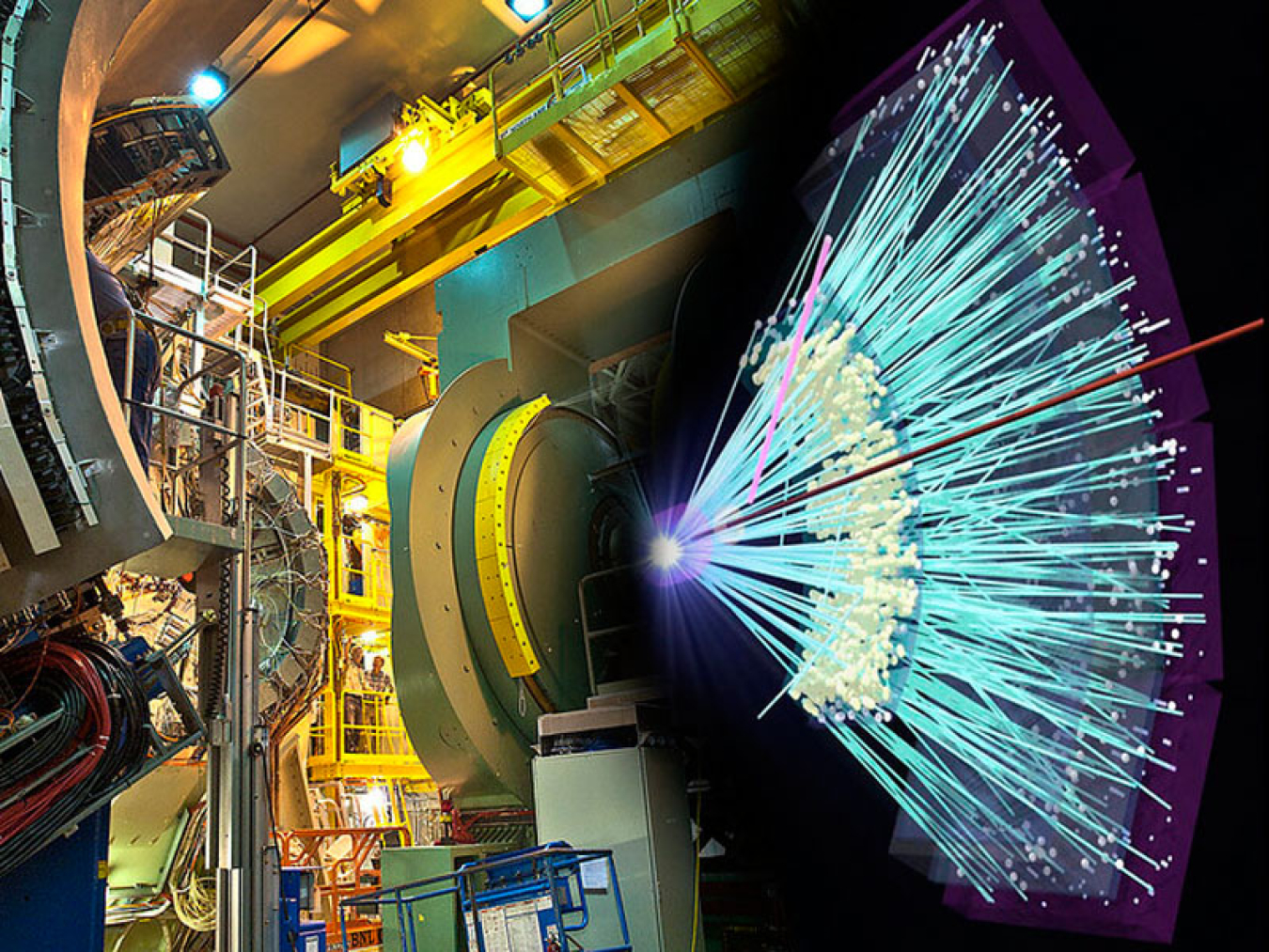
The Big Questions series features perspectives from the five recipients of the Department of Energy Office of Science’s 2019 Distinguished Scientists Fellows Award describing their research and what they plan to do with the award.
Contributing Author Credit: Barbara Jacak is the director of the nuclear science division at Lawrence Berkeley National Laboratory.
What was matter like at the beginning of the universe?
While we can’t time travel, we can explore the first microsecond after the Big Bang by re-creating the quark-gluon plasma. The very earliest type of matter, the quark-gluon plasma is a hot, incredibly dense soup of particles. These days, we produce the quark-gluon plasma by smashing heavy ions together at extremely high speeds.
When we turned on the Relativistic Heavy Ion Collider (RHIC) at Brookhaven National Laboratory in 2000, we found out that the quark-gluon plasma is much more interesting than we expected. It behaved like a liquid! How can something so hot – trillions of degrees kelvin – behave like a liquid? Even at that temperature, the strong interactions remain really strong.
What we’re learning about the quark-gluon plasma can also teach us a lot about other types of plasma. The way it behaves isn’t all that different from the warm dense matter that makes up the cores of small stars and giant planets. Our work can even inform fusion scientists’ research to minimize disruptions in plasma. There’s a lot of room for cross-fertilization.
RHIC, a Department of Energy Office of Science user facility, makes it possible to explore this unique form of matter. It relies on accelerators, extremely powerful machines that speed very tiny particles up to nearly the speed of light.
The Office of Science – particularly the Nuclear Physics program – is a major steward of fundamental physics and accelerator science. Developing and maintaining accelerators has always been a major responsibility of the DOE national laboratories. E.O. Lawrence’s vision in the 1930s of the first circular accelerator both launched this field of research and the laboratory that eventually became DOE’s Lawrence Berkeley National Laboratory.
But the government’s support for Lawrence’s invention was just the beginning. Even now, reliable long-term funding allows us to do great things that we wouldn’t be able to do with inconsistent support. Personally, the sustained support from the Office of Science that I’ve enjoyed has been truly awesome.
Team science is also really fun. It makes us more productive and inspired. Fortunately, the Office of Science’s long-term support sets the foundation for the mentoring and growth of young scientists that go on to be researchers, innovators, and technological leaders. A student’s response when encountering the research at our national labs is, “This is awesome.” These young minds bring new ideas and questions that make us rethink how we look at fundamental problems. You can do stuff at the national labs that you can’t do anywhere else, but when you add students, that’s when the magic really happens. The combination makes the labs and the universities both better at their mission.
Looking forward, the electron-ion collider will be the next great project coming out of this long-term support. My team and I will be using it to discover some fundamental truths about protons, neutrons, and nuclei. I look forward to the adventures it will make possible. This includes writing some 21st century just-so stories, like “How the proton got his spin” and “How the neutron got her mass.”
This fellowship is going to allow me and my team to use the electron-ion collider to see if the very interesting and weird properties that we see in hot dense matter full of gluons also show up in cold, dense matter full of gluons. My bet is that it’s going to be just as weird and surprising as hot dense matter.
Thank you very much to the Department of Energy’s Office of Science for making my past, present, and future work possible.

